Program
2025 EDS MEMS Workshop on “MEMS and Filter”
We are delighted to invite you to the 2025 MEMS Workshop on “MEMS and Filter”, to be held on 10 March 2025 as the special session of the 2025 IEEE Electron Devices Technology and Manufacturing Conferences (EDTM 2025). This workshop is being organized by the MEMS Technical Committee in the IEEE Electron Device Society (EDS).
| Date: | 10 March 2025 (Monday) |
| Location: | Function Hall Hong Kong Science and Technology Park HONG KONG |
Organized by:
MEMS Technical Committee, IEEE Electron Device Society
Center of Wide-Bandgap Semiconductor Electronics (CWISE), HKUST
Invited Speakers
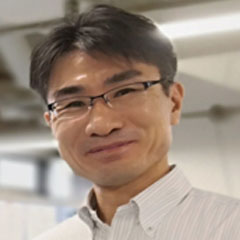
Prof. Shuji Tanaka
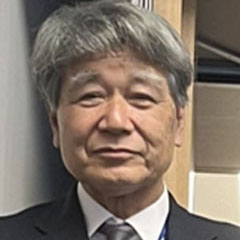
Prof. Michio Kadota
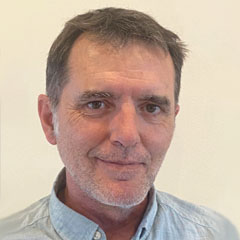
Prof. Carlos Collado Gomez
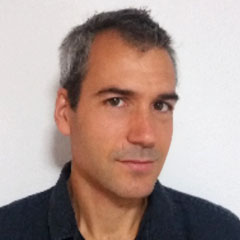
Prof. Jordi Mateu
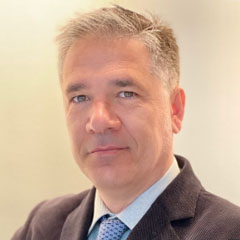
Prof. Pedro de Paco Sanchez
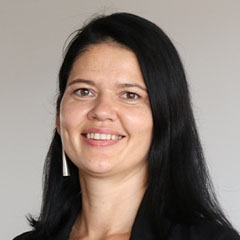
Prof. Ausrine Bartasyte
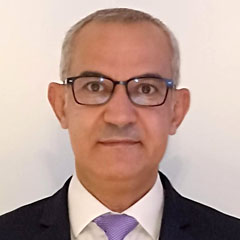
Prof. Omar Elmazria

Prof. Shuji Tanaka
Talk: Acoustic Wave Devices Using MEMS-Inspired Technology
SAW devices and MEMS are based on similar technologies, such as electromechanical transduction and wafer processing. By combining these technologies, it is possible to realize new types of acoustic wave devices. This lecture primarily focuses on such advanced devices, rather than the more standard ones like SAW devices, HAL SAW devices, and AlN/ScAlN BAW devices.
Plate wave devices using LiNbO3 and LiTaO3 thin layers achieve ultrahigh frequencies and/or ultrawide bandwidths. Our A1 mode resonator demonstrated an impedance ratio as high as 71 dB at 5 GHz, representing one of the highest levels of performance ever reported. Using suspended LiNbO3 and LiTaO3 thin plates, new types of acoustic wave devices — such as XBAR, YBAR, and XSAR — are also being developed. XSAR, proposed by our laboratory, theoretically offers a wider bandwidth compared to XBAR and YBAR. We will discuss the current achievements and challenges in this field.
A monolithic tunable SAW filter with BST-based variable capacitors has been developed for white-space cognitive wireless communication using the digital TV band (470 to 710 MHz). Patterned BST thin films were transferred from a sapphire wafer to a LiNbO3 wafer, where SAW filters were fabricated, using metal bonding and laser-assisted debonding. Layer and device transfer technologies are expected to become increasingly important in the future for silicon photonics and integrated acoustic wave devices.

Prof. Michio Kadota
Talk: Surface Acoustic Wave Resonators and Filters
The application of surface acoustic wave (SAW) devices in consumer electronics began with their use as filters in the video intermediate frequency (VIF) circuits of televisions (TVs). Today, SAW filters, alongside bulk acoustic wave (BAW) filters, are indispensable in mobile communications.
The authors have been involved in the development of SAW devices since their early stages at Murata Manufacturing Co., Ltd., and continue their contributions at Tohoku University, playing a significant role in advancing and commercializing these technologies.
The following SAW devices were developed and successfully implemented for practical use:
- Small and Low-Cost SAW Filters for TV VIFs with frequency-tuning-free using ZnO film on glass substrates (they were the world’s first of their kind to be developed and commercialized).
- 40 MHz longitudinal resonator filters IF Filters for Electronic Toll Collection (ETC) systems with small size, wideband, and low insertion by using perfect reflection of Bleustein-Gulyaev-Shimizu (BGS) waves at substrate edges, eliminating the need for conventional grating reflectors.
- 100–225 MHz longitudinal resonator filters with compact grating reflectors for IF mobile phones using shear horizontal (SH) wave on high density Ta electrodes on ST-90°X quartz,which have small size, narrow 3 dB BW, and a near-zero temperature coefficient of frequency (TCF).
- 0.8–2 GHz SAW Duplexers for mobile phones (TC SAW) with a low TCF (-10 ppm/°C) and a small size composed of flattened SiO2 film, high density electrode, and LiTaO3 (LT) or LiNbO3 (LN) substrates.
- 0.8–2 GHz RF longitudinal resonator RF filters for mobile phones with samll size, a low TCF (-18 ppm/°C) using boubdary acoustic wave composed of thick SiO2 films, high-density electrodes, and LN substrates, which doesn’t need any package.
The following devices are currently under development:
- Hetero acoustic layer (HAL) SAW resonators with high Q, near-zero TCF, and surious-free characteristics combining a LiTaO3 thin plate with a negative TCF and an oriented quartz substrate with a positive TCF.
- 8 GHz harmonic SAW ladder filters using grooved electrodes in LN using interdigital transducers (IDTs) with wavelengths of 1.2 μm or less due to power-handling limitations.

Prof. Carlos Collado Gomez
Talk: Characterization and modelling of nonlinearities in electro-acoustic devices for RF communications
The nonlinear characteristics of passive devices are becoming increasingly important due to ongoing efforts in miniaturization and the growing demands for power handling. This is particularly relevant for RF filters, where the physical phenomena governing the device’s operation may exhibit nonlinear behavior.
In general, nonlinearity (NL) can be categorized into intrinsic nonlinearities—when the constitutive equation governing the underlying physical phenomena is nonlinear—or self-heating nonlinearities. These concepts are applicable to various technologies, including superconducting, ferroelectric, ferromagnetic, and electroacoustic devices.
This issue is especially critical in complex RF modules, where multiple transmitters and receivers may share the same antenna. Designing devices accounting for nonlinearities requires a structured approach, consisting of the following five steps:
- Problem Definition: Identify the NL intrinsic equations, incorporating thermal effects if necessary.
- Modeling: Develop appropriate models for the device.
- Measurements: Define and implement suitable measurement setups.
- Characterization: Determine the nonlinear parameters that uniquely describe the NL system’s behavior.
- Prediction: Predict the nonlinear behavior of new devices prior to manufacturing.
We will illustrate the application of these five steps to the specific challenges posed by electroacoustic devices in communication systems

Prof. Jordi Mateu
Talk: Overview on the Synthesis and Design of electroacoustic Filters
Electroacoustic filter excels for their compact size and high performance at microwave frequency, being without any doubt the leading technology in the global RF filter market share, taking almost the fifty per cent of the market. This includes SAW (Surface Acoustic Wave) and BAW (Bulk Acoustic Wave) configurations, where over the seventy per cent of those are based on SAW configuration. Regarding the global market share in terms of applications, mobile phone communication takes the most significant portion reaching up to forty per cent of the market, being electroacoustic filters the almost unique filter technology inside our portable devices. Although electroacoustic filters are also used in satellite communication, aerospace and defense application and TV broadcasting, among others, mobile communication industry has been driving the evolution of this technology for the past twenty years, and vice versa.
Despite of the maturity of the technology, the cellular communication evolving needs, in terms of coexistence, bandwidth, operating frequency, power handling and nonlinear effects demands for the development of new resonator configuration, used of materials, novel filter topologies and systematic and fast design processes. Among the previous requirements there is also the continuous demand for further miniaturization.
This talk overviews on the synthesis and design of several types of acoustic filters. This includes conventional ladder topologies, transversal topologies and CRF (coupled resonator filters). Mixed topologies of the previous will be also presented. Several example will be shown for several resonator configuration, namely SAW, BAW and high electroacoustic coupling resonators based on Y-BAR configuration. Practical consideration will be also address in this talk.

Prof. Pedro de Paco Sanchez
Talk: AW Multiplexer Modules, Unveiling the floorplan by a Synthesis based EDA Tool
During the deployment of Long Term Evolution-Advanced (LTE-A) networks, the concept of carrier aggregation (CA) was introduced. CA is a fundamental technique which helps optimize infrastructure network use in handset devices while improving channel capacity. Thanks to CA, terminal users have more effective bandwidth by being assigned different resource blocks or channels simultaneously within a communication, either to transmit or to receive information.
The most complex case, and the one which changed the basic architectures of RF-FEM the most, is inter-band CA, in which the aggregation is between channels on different bands. Multiplexers allow different front-end chains to share, typically, the same antenna either to transmit or to receive information by connecting all filters to a common node.
The challenge of matching all filters to a common node while fulfilling the stringent requirements of small-signal performance such as insertion loss, rejection and cross-isolation is an extremely complex and time-consuming task. During the design of an individual filter of the multiplexer, the loading effect that the rest of the filters will impose on it when connected to the same node must be predicted from the very beginning to properly match the filter to the actual antenna impedance that it will see. Not only that, at the same time the loading effect that the filter under design is going to impose on the others must be also controlled so that the next filter to be designed finds an optimum environment for matching. As a consequence, multiplexer design is a task which needs a large number of iterations before finding the optimum design.
In this talk the author will introduce a general synthesis methodology to synthesize a whole multiplexer network composed of 𝐾 microwave-acoustic filters in a single shot with a Manifold, Herringbone or Star Junction topology. As in any other synthesis technique, it starts by defining a set of network polynomials from whom to extract the network elements which compose them. In this sense, the required network elements would be easily derivable from a desired multiplexer transfer function which accomplishes all the small signal specifications, inherently controlling the loading effect between filters at the same time. As in the case of a standalone filter, this synthesis methodology speeds up the design process of the multiplexer, providing a reliable seed to start further stages of the AW design cycle and, more importantly, of the RF front-end module floorplan that can be exhaustively analyzed with the EDA tool.

Prof. Ausrine Bartasyte
Talk: Growth of LiNbO3 films for high-frequency acoustic devices
The next generations of Radio-Frequency (RF) wide-band filters or frequency-agile filters are urgently needed for the development of 5G-6G infrastructures/networks/communications. Today, LiNbO3 and LiTaO3 single crystals are key materials in electro-optics and RF acoustic filters. This motivates further development of acoustic wave devices based on high electromechanical coupling LiNbO3 thin films, adapted to the above-mentioned RF applications. The growth of LiNbO3 films has been considered too challenging. In this work direct liquid injection CVD was demonstrated to be the deposition technique enabling the control of film composition/ non-stoichiometry of volatile alkali metal. A particular effort was done to achieve the epitaxial growth of films with controlled single orientation and nearly stoichiometric Li2O composition as well as to texture these films with highly-electromechanically-coupled orientations on BAW heterostructures [1, 2] including epitaxial growth of 33°Y oriented films on Si substrates [3]. Particular effort was done to achieve films with controlled Li2O composition and stoichiometric composition (Figure 1a) and homogeneous composition (± 0.05 mol%) distribution over 4 inch wafers. CVD growth also assured highly homogeneous thickness on the wafer scale. We have demonstrated acoustical performances compatible with filter applications for SAW and BAW devices, based on grown LiNbO3 films, operating at frequencies of 5-7 GHz [4,5]. This opens future prospects for potential applications of LiNbO3 films in acoustic devices.
| [1] | A. Bartasyte, S. Margueron, T. Baron, S. Oliveri, P. Boulet, Adv. Mater. Interfaces 1600998, (2017). |
| [2] | A. Bartasyte, S. Kuprenaite, V. Astié , “Layered solid element comprising a ferroelectric layer and a method for manufacturing the same”, Patent EP20 305575 (2020). |
| [3] | A. Bartasyte et al., Nanotechnology 35 (17), 175601 (2024). |
| [4] | A. Almirall et al., Appl. Phys. Lett. 114, 162905 (2019). |
| [5] | S. Boujnah et al., IFCS-EFTF, Japan (2023). |

Prof. Omar Elmazria
Talk: Wireless Magnetic Surface Acoustic Waves Sensors (MSAW) : A review
Interest in the development of sensors for the detection of magnetic field has never stopped growing, given the wide range of applications that can be addressed.
Surface acoustic waves (SAW) devices are key components in communication systems and have the advantage of being robust, small, passive, wireless and even package-less in specific configurations. To make it sensitive and selective for a physical magnitude while being insensitive to other environmental magnitudes, the judicious choice of the constituent materials is the key step preceding its realization. In our case we focus on the development of magnetic SAW sensors (MSAW) and we will use multilayer structure made of smart materials to meet different requirements. For sensitivity, we will use a layer of magnetoelastic material, micro-structured or not. For the transduction, we will use piezoelectric substrates and to eliminate the effects of temperature we will add dielectric layers which will ensure the compensation by considering the properties of the other constituent layers. Combined with magnetoelastic layer, SAW sensor could exhibits a controlled sensitivity to magnetic field intensity and direction.
In this lecture, an overview of general principle of the MSAW sensors in wired and wireless configurations and developments needed to implement this technology will be given. A review of recent works including from our group will be presented by positioning them with respect to the state of the art. The sensitivities, detection limits and range of detection will be specified for each structure and configuration considered. Finally, and depending on MSAW performances, examples of potential applications in the field of industry, biomedical, energy, transport, etc. will be proposed and analyzed together with an outlook of what MSAW technology can bring.
We will also discuss the magneto-elastic interaction involved in MSAW as well as the SAW-Spin waves coupling that will enable the invention of new types of SAW devices with non-reciprocal transmission with innovative applications in the field of communication systems.
